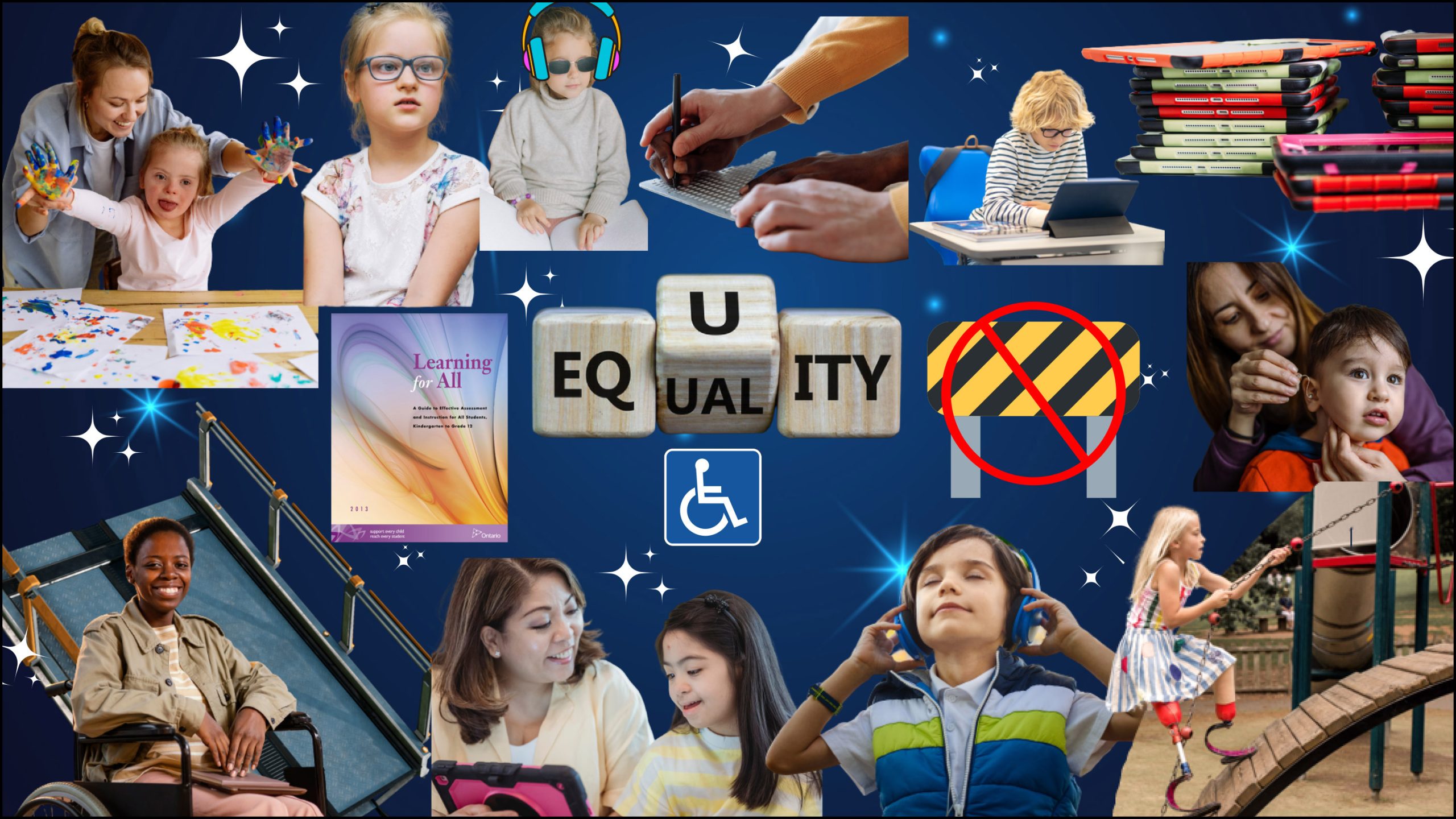10 Students with Exceptionalities

By Nicole Khublal
It has been my experience that the prevalence of students with exceptionalities entering the public education system continues to rise. This collage represents the injustice of equitable education for students with exceptionalities. It symbolizes that in order for students to ‘reach for the stars’ and succeed in achieving their goals, equity must be present. Equal support provided for all students does not necessarily cater to individual needs. According to Article 23 in the Convention on the Rights of the Child (United Nations, 1989), children with special needs should have access to free education with special care and assistance from available resources. Although progress has been made to “foster equity and inclusiveness in boards and schools, evidence indicates some groups of students continue to encounter discriminatory barriers to learning” (Ontario Ministry of Education, 2013, Background section, para. 3), affecting their quality of education and hindering the development of their full potential.
In 2022, the K-12 Education Standards Development Committee, in collaboration with government representatives, educators and members of the varying abled community, put forth a report identifying barriers within the Ontario elementary public education system. Ten categories of barriers were identified, including attitudes, awareness and training, curriculum, instruction and assessment, digital learning and technology, organizational barriers, social realms, physical and architectural barriers, planning for emergency and safety, timelines and accountability, and transitions (Government of Ontario, 2022). The removal of these barriers would ensure that students can receive the best education possible.
The Ontario Government should investigate these barriers and consider the recommendations as necessary implementations to remove current and prevent future restrictions within the education system. Creating an action plan, in addition to standard province-wide board policies, can make all the difference between inclusive and student-centred equitable education.
References
Government of Ontario. (2022, February 23). Development of proposed kindergarten to grade 12 (K-12) education standards – 2022 final recommendations report. https://www.ontario.ca/document/development-proposed-kindergarten-grade-12-k-12-education-standards-2022-final-recommendations
Ontario Ministry of Education. (2013, April 22). Requirements for boards. Policy/program memorandum 119. https://www.ontario.ca/document/education-ontario-policy-and-program-direction/policyprogram-memorandum-119#section-2
United Nations. (1989). Convention on the rights of the child. https://www.ohchr.org/en/instruments-mechanisms/instruments/convention-rights-child

